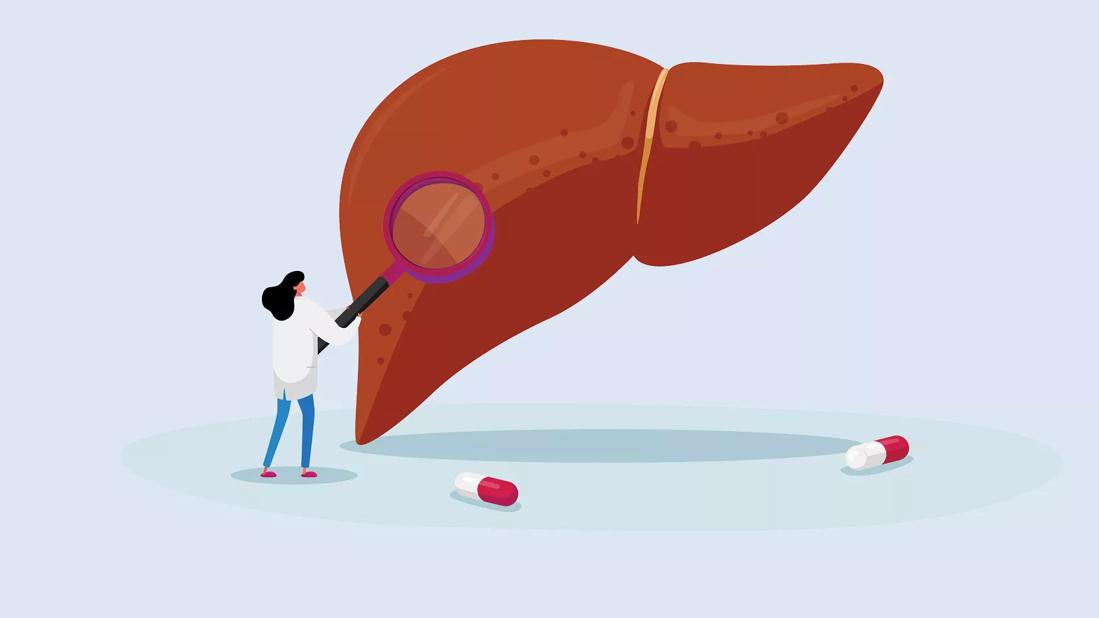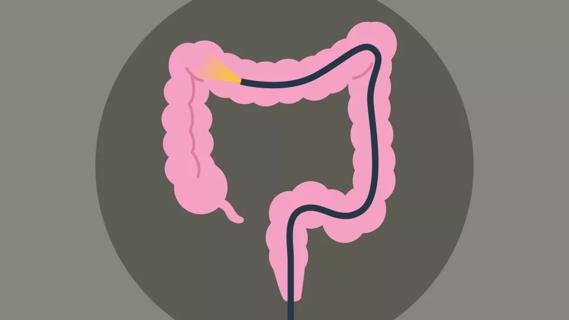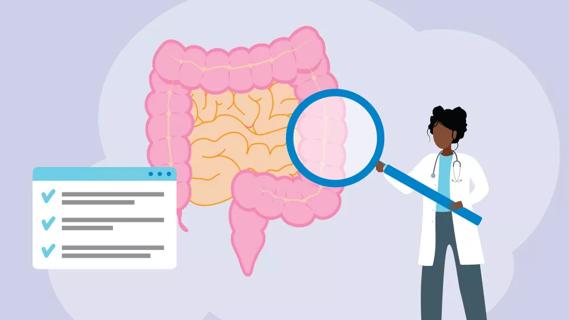Blood tests can explain nausea, pain, jaundice and more

Your liver is a master at multitasking. It digests food, processes nutrients and removes toxins, and does away with old red blood cells, as well as hundreds of other important jobs.
Cleveland Clinic is a non-profit academic medical center. Advertising on our site helps support our mission. We do not endorse non-Cleveland Clinic products or services. Policy
When your liver isn’t working as it should, you can develop symptoms like:
There are certain symptoms that may cause your doctor to order a liver function test. They can also be an important part of your annual well-check.
“You may need liver tests to investigate jaundice, dark urine or pain in your right upper abdomen,” says hepatologist Carlos Romero-Marrero, MD. “But liver tests also are part of routine physical exams and can be used to monitor medications you’re taking.”
Liver function tests can reveal problems even before you have symptoms.
Liver function tests are blood tests that measure substances in your blood to ensure your liver is functioning as it should. If your results are abnormal in any one of these tests, that doesn’t indicate a liver problem necessarily. Each of these tests is just one piece of the larger puzzle. Your doctor will consider your liver function test results along with any other tests, your overall health and any symptoms you are experiencing to determine whether your results point to any problems.
What is the ALT test?
The ALT test measures your levels of alanine transaminase (ALT), an enzyme in your liver. If your liver is damaged, ALT can leak into your blood.
What’s a good range for ALT test results?
What could abnormal ALT results mean?
What is the AST test?
The AST test measures levels of aspartate transaminase (AST), an enzyme in your liver and muscles. If your liver is damaged, AST can leak into your blood.
What is a good range for AST test results?
What could abnormal AST results mean?
“An abnormal ALT and/or AST that persists for more than six months should be investigated further,” Dr. Romero-Marrero says. “Your doctor may consider additional testing to check for viral, autoimmune and metabolic causes of liver disease. An abdominal ultrasound may also be ordered to check for the presence of fatty liver.”
What is the ALP test?
The ALP test measures your levels of alkaline phosphatase (ALP), an enzyme in your liver, bones, kidneys and digestive system. If your liver is damaged, ALP can leak into your blood.
What is a good range for ALP test results?
What could abnormal ALP results mean?
If your ALP is high but your other liver tests are not, it could indicate:
“As with elevated ALT and AST levels, your doctor will likely want to perform additional tests if you have elevated ALP levels for more than six months,” Dr. Romero-Marrero says. “An ultrasound of the liver is a common next step to check for obstructions, liver masses or problems related to the small bile ducts. Your doctor may also perform blood work to rule out other conditions.”
What is the GGT test?
The GGT test measures your levels of gamma-glutamyl transpeptidase (GGT), an enzyme in your liver, bile ducts and pancreas. If your liver is damaged or bile ducts are blocked, GGT can build up in your blood.
What is a good range for GGT test results?
What could abnormal GGT results mean?
The globulin test measures your levels of globulins, which are proteins in your liver used to
fight infection and clot blood.
What is a good range for globulin test results?
What could abnormal globulin test results mean?
Globulin levels that are lower than the normal range could indicate:
Globulin levels that are higher than the normal range could indicate:
The albumin test measures your levels of albumin, a protein made in your liver that carries hormones and vitamins through your body.
What is a good range for albumin test results?
What could low albumins test results mean?
The prothrombin test measures your levels of prothrombin, a protein made in your liver that helps clot your blood. A prothrombin time test measures how long it takes your blood to clot.
What is a good range for prothrombin test results?
What could high prothrombin test results mean?
The bilirubin test measures your levels of bilirubin, a yellow fluid in bile that is made when your red blood cells break down. If your liver is damaged, bilirubin can leak into your blood.
What is a good range for bilirubin test results?
What could abnormal bilirubin test results mean?
“Commonly, an isolated elevation of bilirubin related to a benign condition called Gilbert’s syndrome, which is caused by a less than efficient filtering or conjugation of bilirubin in some individuals,” Dr. Romero-Marrero says.
It’s important to remember that one abnormal test result doesn’t mean you have liver problems. Medication, diet and other factors can affect your scores.
“You may need liver tests to investigate jaundice, dark urine or pain in your right upper abdomen,” says Dr. Romero-Marrero. “But liver tests also are part of routine physical exams and can be used to monitor medications you’re taking.” Liver tests can reveal problems even before you have symptoms.
What puts you at risk for liver problems?
But, again, one abnormal test result doesn’t mean you have liver problems. Your doctor will look at a combination of scores to diagnose liver damage or disease and will explain any areas of concern and help you determine your next steps.
Learn more about our editorial process.

At any age, women can be more susceptible to cirrhosis than men

They might not be fun, but colonoscopies are low-risk, high-reward procedures

Misleading claims, lack of scientific evidence and the risk of over-doing it are all concerns

It’s more than just avoiding gluten — it’s also important to focus on your mental and emotional health

Talk to your employer, ask for accommodations and manage your stress

Seeking help through therapy can be an important step in improving your quality of life when you have UC

If you’re at average risk, it’s recommended that you get your first colonoscopy at age 45

Alcohol affects your whole body, from your liver and immune system to your brain and mental health

Your metabolism may torch 1,300 to 2,000 calories daily with no activity

A gentle touch in all the right places may help drain your sinuses